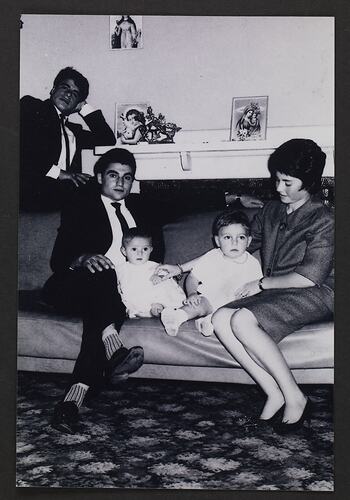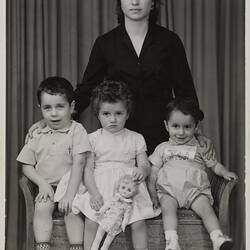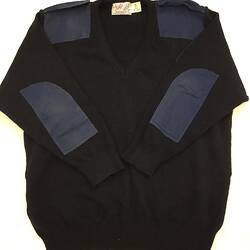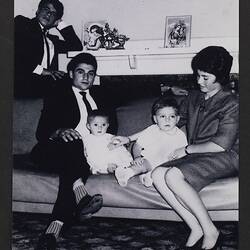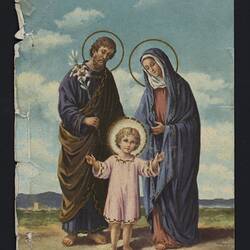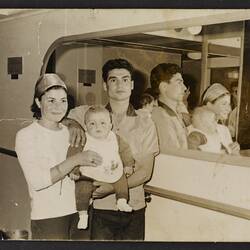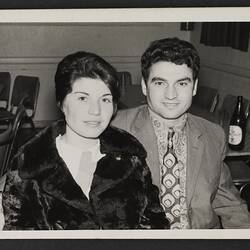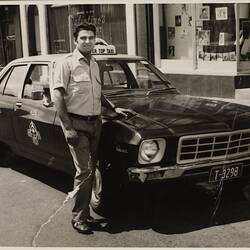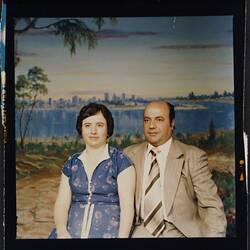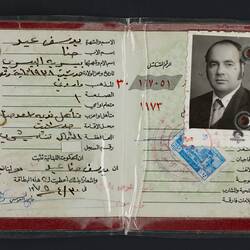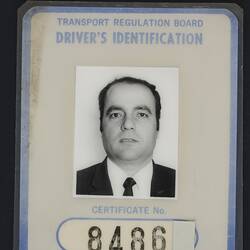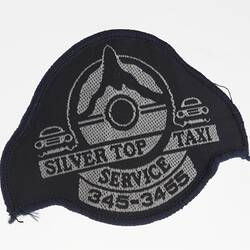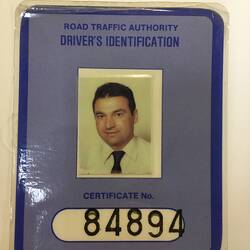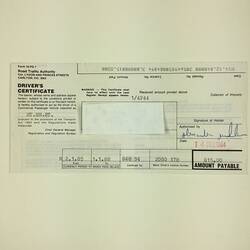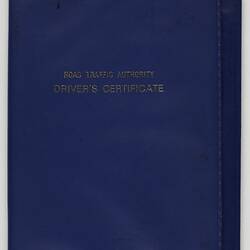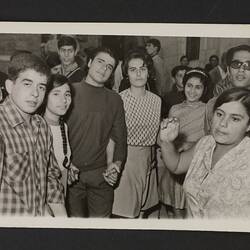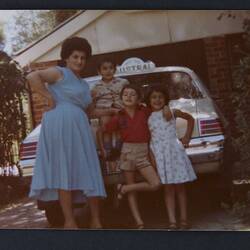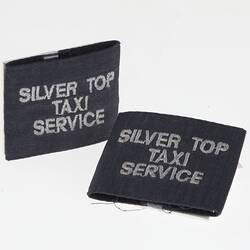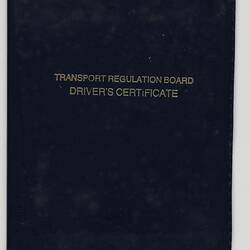Summary
Romanos, Tansa and Youssef Eid migrated to Australia from Lebanon, one following the other to create a close family network in Melbourne.
Early Years:
Youssef, Romanos and Tansa Eid were born in 1938, 1944 and 1947 respectively in Hadchit, a small Maronite Catholic village situated in the mountains on a precipice above the Qadisha Valley (Holy Valley) in the north of Lebanon. As sons of apple orchardists, they learnt to cultivate gardens and tend to agricultural land from an early age.
After leaving his studies at the age of 16, Youssef worked as a stone mason and was earning a good living. He built stone terraced walls on stepped garden beds characteristic of the mountains of Lebanon. Youssef married his neighbour Nadimie Hanna in 1961 and they had three children John, Jeanette and Raymond.
Migrating to Australia:
Nadimie had three brothers and an uncle in Australia. In 1965 under the sponsorship of her brother Elias Hanna and guaranteed by her uncle Raymond Betros, one of Hadchit's pioneers who migrated to Melbourne in 1926, they boarded the Greek ship Patris and set out for Australia. They stayed with her brother Nadim and his family in Strathmore for a few months before buying a house in Essendon with the help of her brother Elias. They had their fourth child, Simon, in Australia.
Youssef spoke Arabic, a little French but not even a smattering of English and yet soon after his arrival, with the help of Nadimie's relatives, he prepared the paperwork to sponsor some of his siblings and relatives to Australia.
The following year Tansa arrived on the Achille Lauro with his sister Saydie. He was the youngest of eight children and after leaving school aged 17 he worked as a caretaker of an apple orchard. He wasn't keen on a future working on the land and looked forward to the opportunities awaiting him in Australia. He imagined Melbourne would be a sophisticated city and as such he had a number of suits and shirts tailored from fine English fabric.
Upon his arrival he discovered Australians were very casually dressed and he soon adapted his attire. On a return visit to Lebanon in the late 1960s he met Nazha Sassine. He wrote her a note, placed it in a box of chewing gum and handed it to her. By the early 1970s they were engaged. They married in 1974 and he brought her to Australia where they had four children Christopher, Christine, Kevin and John.
While Romanos migrated in 1967 with his wife Yvonne (nee Semaan), their son Tony, his brother Georges, his wife Georgette (nee Sulaiman) and their son Raymond. He left school aged 14 and worked on his family's apple orchard. As a romantic, gregarious and charismatic young man he had a talent for writing and reciting poetry. While courting Yvonne he remembers reading Romeo and Juliet to her while she was on her balcony hanging laundry. In response she poured a bucket of water over his head. They were soon married in 1965. After having their son Tony they decided if the opportunity arose to come to Australia they would take it. Romanos recalls 'I wanted to make a better future for my family. Over there you can work hard and no money. Here you can work hard and make money.' They had four children in Australia, Antoinette, Clarette, Joseph and Sam.
Chain Migration:
The Eid brothers were part of the second wave of Lebanese migration (1948-1975) to Australia, which followed the first wave (1880s-1920s). Like so many of Australia's migrants, the Hadchit Lebanese community in Victoria was established through chain migration and this dates back to 1926.
Kinship and community networks greatly influenced their occupational pathways. Youssef, Romanos and Tansa benefited from their relationship with the Hanna family. Their first job in Australia was at Footscray's Bradmill Cotton Mills operating cotton spinning machines. Elias organised a job for Youssef before he had even arrived to Melbourne. Subsequently Tansa and Romanos found a position there through their brother Youssef. They worked at various factories, Tansa even worked as a tram conductor which helped him improve his English skills.
Driving Taxis:
Following the business model established by the Hanna brothers they gradually shifted into taxi driving to embrace economic opportunity. They had limited education, so with the absence of a trade or profession they felt their career paths were restricted. They identified distinct advantages with the taxi business - greater earnings, autonomy, social mobility and low entry level, which seemed to outweigh the long hours and high personal and financial risk.
Youssef, Romanos and Tansa were successful in raising their families and providing greater opportunities for future generations.
More Information
-
Keywords
-
Authors
-
Article types
